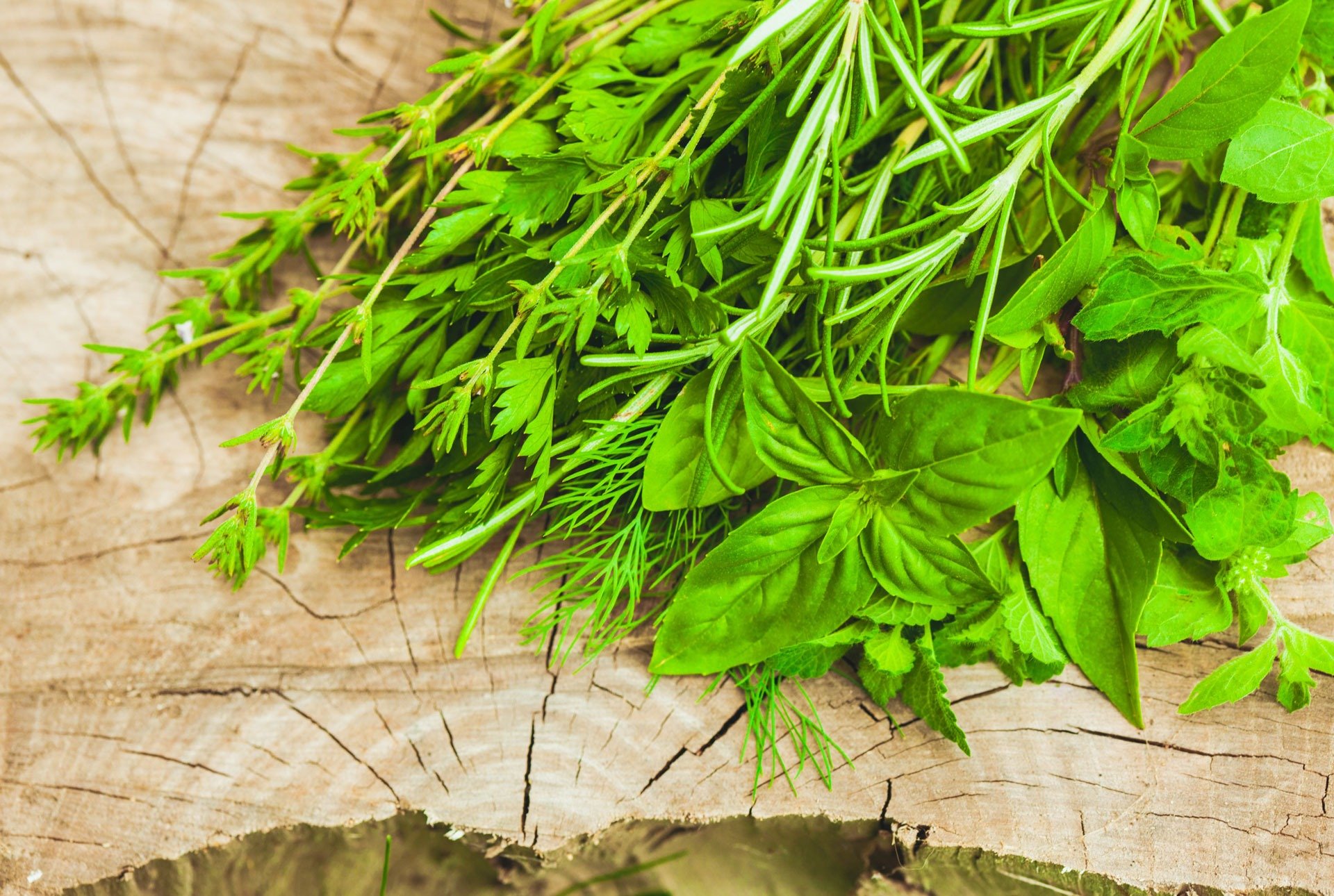Real Food Encyclopedia | Basil
If you’re lucky, and have access to a garden with verdant clumps of basil growing in it, there’s nothing like its heady smell hovering in the summer heat.
While Americans associate basil with Italian food, it is actually native to India and Southeast Asia. The earliest known reference stretches back 5,000 years to Indian Vedic texts. And true to its long history, basil comes in many varieties, from sweet basil known to many Italian recipes (Ocimum basilicum) to the “holy” basil (O. tenuiflorum) that is essential to ayurvedic medicine. Part of the mint family, other varieties include Thai (O. basilicum var. thyrsiflora) and Lemon basil (O. × citriodorum).
The green leafy herb has a history steeped in folklore. In India, it was used to ward off evil and was considered sacred. Europeans in the Middle Ages thought that basil caused the spontaneous generation of scorpions and that even smelling basil could lead to an unfortunate case of scorpions in one’s brain. That said, should a scorpion sting you, folklore recommends basil as a cure… which could lead to more scorpions and more stings, but there you go.
Fun Facts about Basil:
- Basil is known as the king of herbs. The provenance of this is murky, but the Greek word for king, basileus, lends itself to this connection. In fact, in addition to its common French name, basilic, basil is also known as l’herbe royale in French. But if you want to slander someone in France — perhaps picking up on basil’s unflattering folklore — the phrase to use is semer le basilic (“sow basil”).
- In India, under British crown rule, Hindus were allowed to swear on holy basil instead of the bible in court.
- In Italy, put a pot of basil on your windowsill to signal a lover. But in Ancient Greece and Rome, it was believed that the herb would only grow where there was hatred and abuse.
What to Look for When Buying Basil
In addition to green basil commonly seen in markets, basil also comes in several purple varieties, a “lettuce leafed” variety (which has giant leaves), a type with tiny leaves (globe basil, which grows into a round, bushy-like plant), several Thai varieties, a lemon-scented type and many more. For all varieties, choose fresh basil leaves that are rich in color. If pre-packaged, leaves should be vibrant and lacking dark spots or wilting, signs that the basil is less than fresh.
Sustainability of Basil
Basil tends to be (mostly) unaffected by insect predators, so the use of pesticides on basil is not common. However, basil plants are affected by weeds, so some growers may use herbicides like Roundup (glyphosate). Look for organically grown basil if you can find it, or grow your own.
Basil Seasonality
Basil is the quintessential summer herb, pairing beautifully with other summer produce (think: tomatoes, eggplant). But basil can be enjoyed year-round, either grown and harvested outdoors during the summer months or grown indoors on your windowsill.
Eating Basil
Storing Basil
Store basil upright in water on your countertop — basil doesn’t love cold. If you must, wrap in damp paper towels and place in the crisper drawer in your refrigerator.
Cooking with Basil
Basil is best enjoyed raw, allowing its sweet, pungent flavor to shine through, although the herb is a nice addition to hot Italian dishes such as pasta sauce. Pair it with cheeses (mozzarella is a classic), fruit (think outside the box — pair purple basil with peaches, for example) or turn into creamy ice cream.
Preserving Basil
Too much basil from your garden or CSA? A great way to preserve your haul and enjoy basil any time of the year is to make basil “ice cubes.” First chop up basil that has been washed and patted dry. (This can be any amount as you can adjust the oil used.) Combine chopped basil with enough olive oil so there is a 2:1 ratio (oil to basil). Mix carefully. Spoon the mixture into a clean ice cube tray and freeze. After cubes are solid, they can be stored in an airtight container for up to a year.
Basil Nutrition
A serving of two tablespoons, chopped, is a good source of Vitamins K and A.


